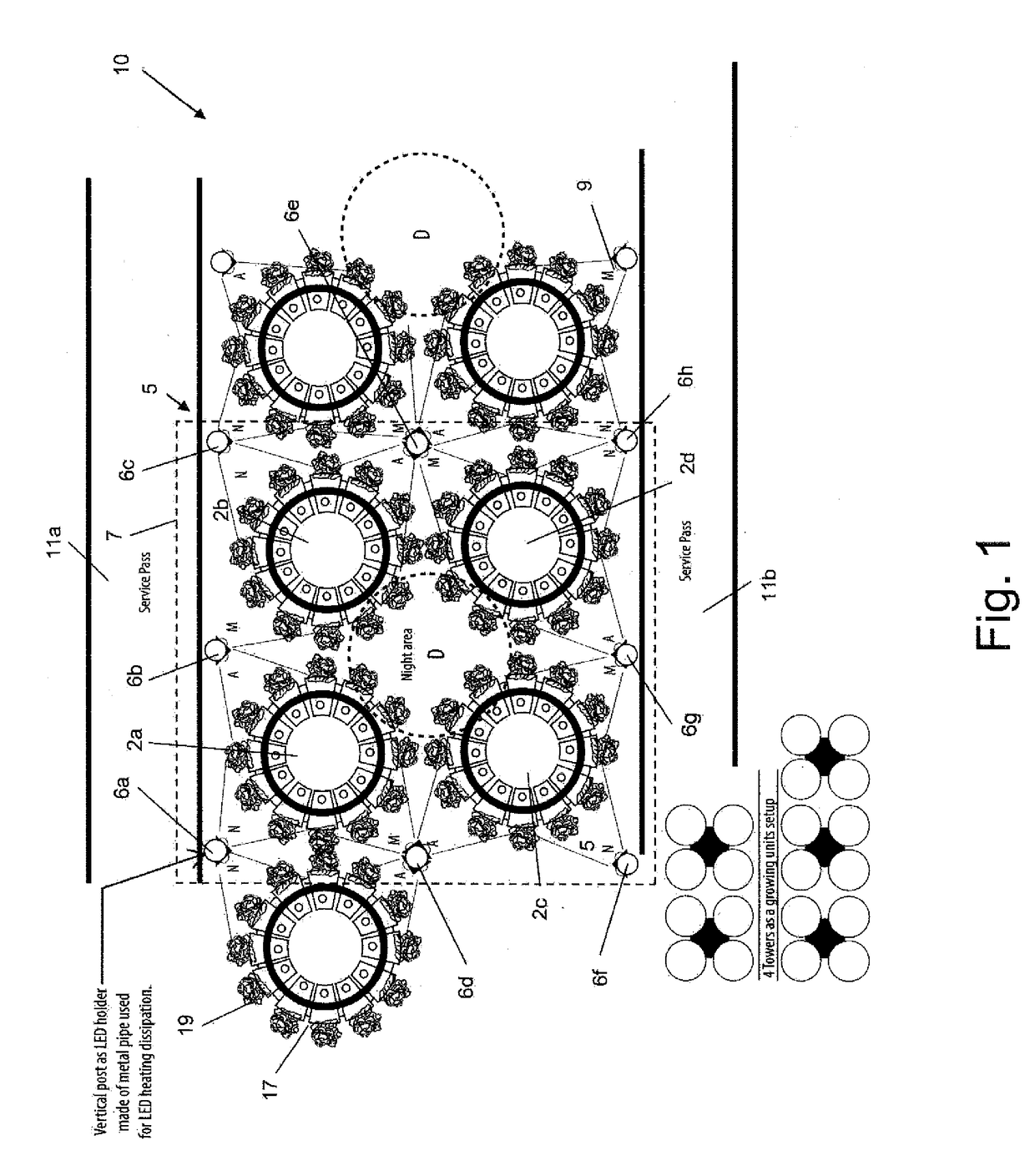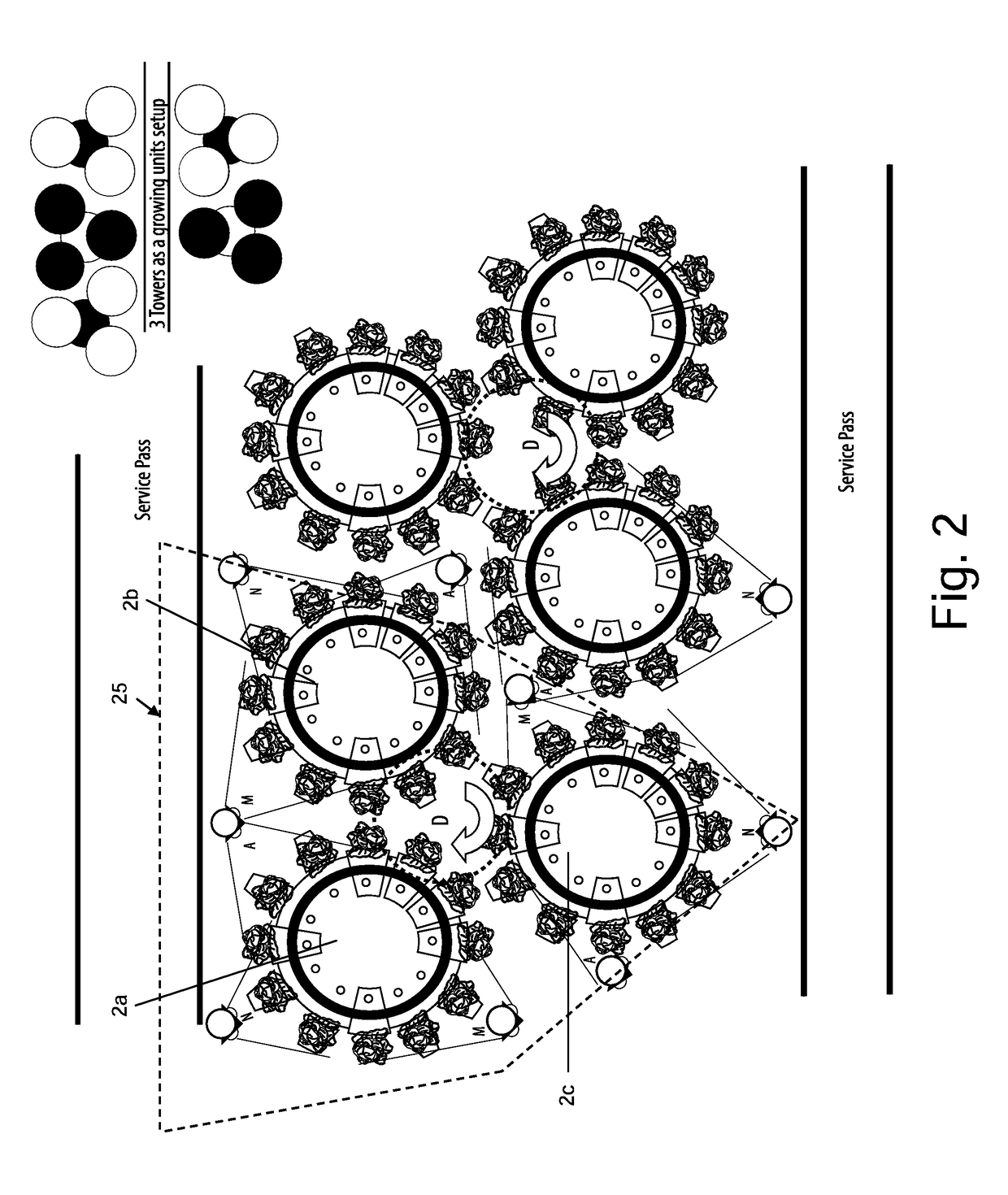A system for indoor cultivation of plants with simulated natural lighting conditions
a cultivation system and indoor technology, applied in the field of indoor soilless plant cultivation system, can solve the problems of destroying millions of tons of valuable crops, laying waste of 15% of agriculturally suitable land, and food-bearing plants subject to the rigors of the outdoors
- Summary
- Abstract
- Description
- Claims
- Application Information
AI Technical Summary
Benefits of technology
Problems solved by technology
Method used
Image
Examples
Embodiment Construction
[0064]The present invention is an energy efficient, indoor soilless plant cultivating system which employs a plurality of stationary light posts, each of which illuminates a predetermined sector of an indoor facility in accordance with a predetermined illumination signature. The plants to be cultivated are mounted on a plant growth unit provided with irrigation means (hereinafter “tower”) of a large vertical dimension similar to that of each light post, for efficiently utilizing the inner dimensions of the facility, which may be an abandoned building in an urban setting or a building in an industrial park dedicated to be used by the cultivating system. The system operates in conjunction with a module that includes a predetermined number of towers, such that each tower of a module is rotated by a drive unit about a vertical axis in accordance with a predetermined timing sequence so as to be exposable to the light generated at any given time by one or more of the light posts. An inter...
PUM
 Login to View More
Login to View More Abstract
Description
Claims
Application Information
 Login to View More
Login to View More - R&D
- Intellectual Property
- Life Sciences
- Materials
- Tech Scout
- Unparalleled Data Quality
- Higher Quality Content
- 60% Fewer Hallucinations
Browse by: Latest US Patents, China's latest patents, Technical Efficacy Thesaurus, Application Domain, Technology Topic, Popular Technical Reports.
© 2025 PatSnap. All rights reserved.Legal|Privacy policy|Modern Slavery Act Transparency Statement|Sitemap|About US| Contact US: help@patsnap.com



